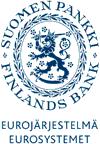 Scientific Monographs, Bank of Finland
Scientific Monographs, Bank of Finland
No E:29/2004:
Essays on financial crises in emerging markets
Tuomas Komulainen ()
Abstract: The financial crises in emerging markets in 1997-1999 were
preceded by financial liberalisation, rapid surges in capital inflows,
increased levels of indebtedness, and then sudden capital outflows. The
study contains four essays that extend the different generations of crisis
literature and analyse the role of capital movements and borrowing in the
recent crises. Essay 1 extends the first generation models of currency
crises. It analyses bond financing of fiscal deficits in domestic and
foreign currency, and compares the timing and magnitude of attack with the
basic case where deficits are monetised. The essay finds that bond
financing may not delay the crisis. But if the country’s indebtedness is
low, the crisis is delayed by bond financing, especially if the borrowing
is carried out with bonds denominated in foreign currency. Essay 2 extends
the second generation model of currency crises by adding capital flows. If
these depend negatively on crisis probability, there will be multiple
equilibria. The range of country fundamentals for which self-fulfilling
crises are possible is wider when capital flows are included, and thus more
countries may end up in crisis. An application of the model shows that in
1996 in many emerging economies the fundamentals were inside the range of
multiple equilibria and hence self-fulfilling crises were possible. Essay 3
studies financial contagion and develops a model of the international
financial system. It uses a basic model of financial intermediation, but
adds several local banks and an international bank. These banks are able to
use outside borrowing, the amount of which is determined by the value of
their collateral. The essay finds that the use of leverage by local and
global banks and the fall in collateral prices comprise an important
channel and reason for contagion. Essay 4 analyses the causes of financial
crises in 31 emerging market countries in 1980–2001. A probit model is
estimated using 23 macroeconomic and financial sector indicators. The essay
finds that traditional variables (eg unemployment and inflation) and
several indicators of indebtedness (eg private sector liabilities and
banks' foreign liabilities) explain currency crises. When the sample was
divided into pre- and post-liberalisation periods, the indicators of
indebtedness became more important in predicting crisis in the
postliberalisation period.
Keywords: currency crises; banking crises; emerging markets; borrowing; collateral; contagion; liberalisation; (follow links to similar papers)
JEL-Codes: F31; F32; F33; (follow links to similar papers)
180 pages, November 11, 2004
Before downloading any of the electronic versions below
you should read our statement on
copyright.
Download GhostScript
for viewing Postscript files and the
Acrobat Reader for viewing and printing pdf files.
Full text versions of the paper:
E29.pdf 
Download Statistics
Questions (including download problems) about the papers in this series should be directed to Päivi Määttä () or Minna Nyman ()
Report other problems with accessing this service to Sune Karlsson ()
or Helena Lundin ().
Programing by
Design by Joachim Ekebom
 Scientific Monographs, Bank of Finland
Scientific Monographs, Bank of Finland
 Scientific Monographs, Bank of Finland
Scientific Monographs, Bank of Finland